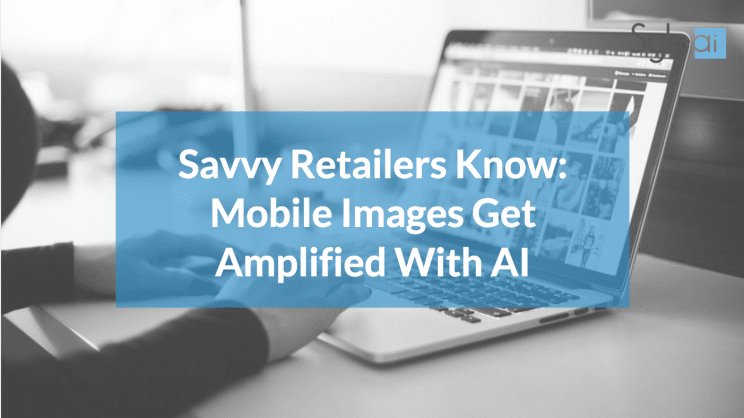
Now more than ever, retailers and brands are using AI to get the most out of their digital assets, especially on mobile devices. This is largely due to the fact that consumers on a worldwide scale are getting increasingly dependent on their mobile devices. This allows retailers and brands to jump in and capitalize on the data the own, mixed with increased mobile device usage. According to Forbes, “consumers in the U.S. now spend an average of five hours a day on mobile devices, and advertisers are spending more than $70 billion in mobile advertising in order to reach them.”
What is it that keeps people so strongly connected to their mobile devices? Most of the credit goes to social media, which collectively boasts 2.5 billion active members that are consistently uploading and sharing textual and visual content on a daily basis. When brands take the same route through visual content, the results are two-fold. For starters, it gives them a way to directly reach potential consumers. Additionally, brands get to obtain valuable insights into how to inspire them which would help potentially convert them into customers. The revenue growth all stems from the images their consumers are sharing and consuming at scale on mobile, and it is up to the brands to discover ways to unlock the value of those images by making sense of the content itself. This is where AI steps in, by making sense of what was previously untrackable.
According to Forbes, it is due to the rise of AI that “the intelligence that lies within an image can be extracted, providing marketers with new insights in real time to help them understand consumer intent.” In the long run, this means that it is by understanding these consumer preferences, retail marketers have the ability to calibrate and optimize their campaigns with targeted product recommendations and personalized product offers, therefore leading to increased sales.
AI-powered visual listening is one of the ways in which marketers can get a better idea of the types of images that people are sharing, posting and consuming, versus just what they’re tagging alone. This technology can also help detect sentiment by scanning emojis that are associated with the image, to determine the experience users have had with a brand. AI also helps provide actionable insights from videos as well, as over 70% of videos are consumed on mobile devices. Since inspiration is typically sparked from images and videos, brands must view video content as part of the discovery phase in the customer journey on mobile devices, and leverage AI-generated insights to turn spontaneous, on-the-go discoveries into a sale.
It is through leveraging AI and optimizing mobile strategies to align with these browsing habits, that retailers can understand exactly what a consumer’s discovery phase entails. They will be able to identify the specifications of types of items that interest consumers, and use AI to respond in kind to help tap into the interest of users. Forbes writes, “The true benefit to brands here is there is so much content available on the mobile web that over time, recommendations get more accurate and relevant. And the more data they can collect, the more extensive their knowledge base becomes for future interactions.”
All this goes to show that AI is the ultimate tool that helps connect discovery, inspiration, and ecommerce by processing visual content at scale to influence retailers and brands for driving customers to product pages. If retailers plan on being successful in 2018 in a cutting-edge way, they will have to incorporate some form of AI technology in their monetization strategies.